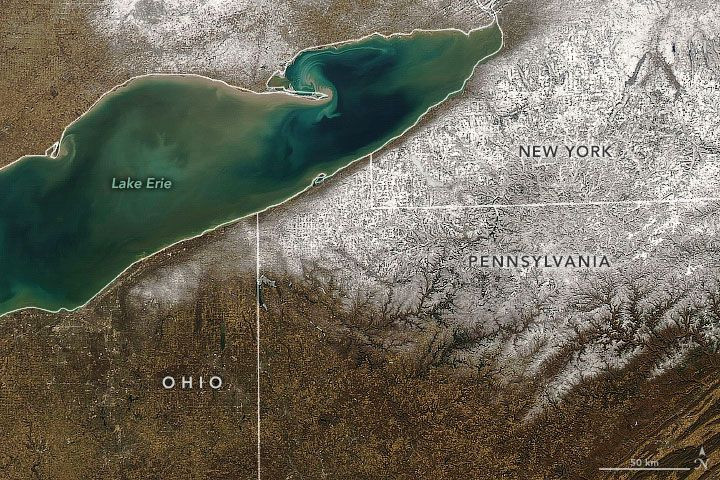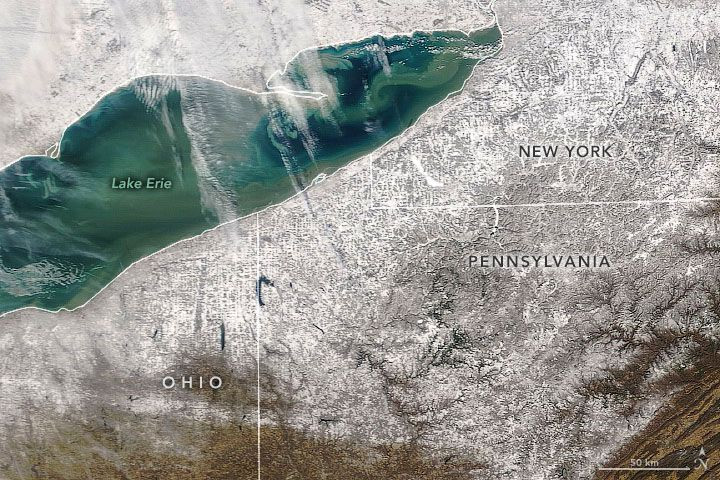NASA Satellite Image Shows Snow-Covered New York After Snow-Less February
KEY POINTS
- After a snow-less February, New York was suddenly buried in thick snow
- NASA satellites captured images of snow-covered New York
- The winter temperatures are not expected to last long
- Spring-like conditions are forecasted to arrive in just a span of days
Many major U.S. cities experienced an unusually warm winter, with places like New York, Washington D.C., Philadelphia and Baltimore having a practically snow-less February. At the end of February, however, thick lake-effect snow came and buried upstate New York.
Snow-Covered New York
The natural-color images captured by the MODIS instrument on NASA’s Terra and Aqua satellite show the difference that lake-effect snow made over New York and its neighbors in a span of just a few days.
Little snow can be seen in the image captured on Feb. 22, showing how snow droughts kept the ground practically bare after a snow-less February. However, the image captured just days later on March 1 shows New York, Pennsylvania and parts of Ohio already covered in thick snow.


Evidently, lake-effect snow from Feb. 27 to 29 brought thick snow to the area, burying several towns in New York in over 2 feet (0.6 meters) of snow by the time that the snow stopped falling.
Lake-effect snow is a common occurrence across the Great Lakes region during late fall and winter. It happens when the cold air, typically from Canada, moves across the warm, unfrozen waters of the Great Lakes. This interaction between heat and moisture eventually causes clouds to form and grow into bigger clouds that generate heavy snowfall.
Typically, wind direction plays an important part in determining which areas will receive the downpour. This year, the winds brought the snow to upstate New York and northwestern Pennsylvania.
First Snow-less February On Record
That said, the sudden late arrival of winter is not expected to last as the warm front moves in. In fact, forecasters note that the weekend’s winter temperatures could make a sudden bounce to spring-like conditions in just a matter of a few days.
Further, despite the sudden winter conditions over the past weekend in New York, two U.S. cities, Baltimore, Maryland and Islip, New York, experienced no snow for the entire month of February for the first time on record.
For Baltimore, records began in 1891 and, in 129 years, February 2020 was the first February that the city received no snow. Similarly, Islip also experienced a snow-less February for the first time since records began in 1964.
© Copyright IBTimes 2025. All rights reserved.






















